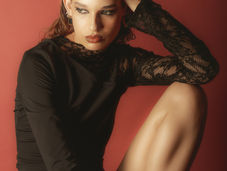'Gatsby': The Roaring 20s and its Aftermath
- Eunmin Na
- Jan 6, 2022
- 2 min read
Ruby in the Dust Theatre's Gatsby follows the plot of a famous tale from F. Scott Fitzgerald's classic novel. Except that this time, the story is told through the perspective of Daisy Buchanan, who approaches her past with Jay Gatsby, her lost love. Gatsby deals with the darker sides of the roaring twenties and the aftermath of the First World War, and more resonantly, the 1918 influenza pandemic.

Set in an intimate auditorium, Southwark Playhouse plays with the idea of a large-scale glamorous party within a close-up setting, almost inviting the audience to take part. Brisk dance moves and the energetic choreography created a cheerful atmosphere in Act One, with a more serious tone in Act Two, where characters of female leads such as Daisy (played by Jodie Steele) and Myrtle (Julie Yammanee) are significantly more substantial and likeable, unlike the original. This is how Gatsby reminds us of musicals based on a rewritten tale of a male-centric one, with the likes of & Juliet, Six and more.
The highlight of this musical, unsurprisingly, was the music. After selling out at Piccadilly's Crazy Coqs with a streamed performance at Cadogan Hall, the original score by composer Joe Evans did not disappoint. The lively sound of the band blended in with the glitzy stage backdrop that read 'Luna Park', weaved in with dreamy fairy lights. Although the musical talent of the band could not be faulted, their sound drowned out singing voices on stage, meaning that one could not hear the lyrics clearly. This meant that much of the dialogue was easily lost, making the narrative difficult to follow, along with abrupt scene changes that occurred throughout.
Though Southwark Playhouse's Gatsby was not without uncertainties and imbalances, it charmed me with its blithe numbers and glamorous visuals.
























Comments